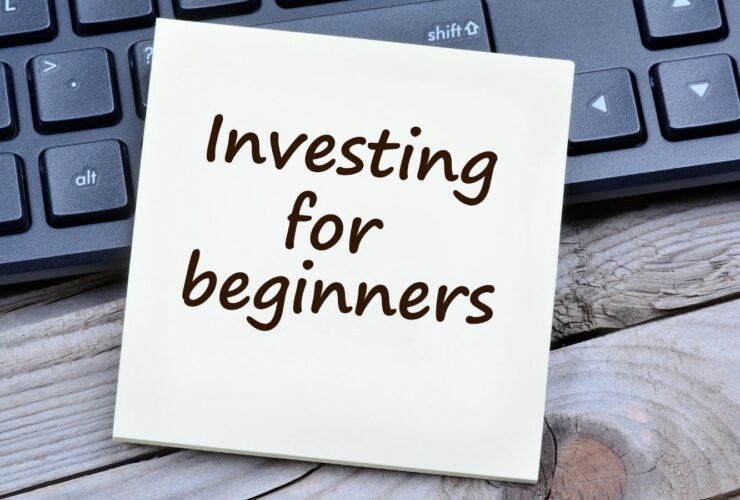Investing for beginners: Why invest at all? Isn’t my 9-5 enough?
Investing can seem like a big, lofty idea that can wait for the future, but the longer you put it off, the less likely you’ll be able to reach your financial and retirement goals.
The most effective and efficient way to build wealth is to invest. Harboring your assets in savings accounts may seem ‘safe’, but when you want to make major life decisions like buying a house or retiring, you may find that your savings accounts fall short.
A 9-5 salary typically isn’t enough to reach your financial goals. Let’s take a closer look at the importance of investing and how you can get started today.
Why is investing important?
You work hard for your money day after day, but when you clock out of your 9-5, you don’t make any more. Your bank account remains the same until the next pay period. Investing makes your money work for you and helps you build wealth.
But what does it mean to build wealth?
Building wealth is the process of generating long-term income through multiple sources more than just job-based income. That’s where investing comes into play. Creating more wealth through investing can help you reach your financial and retirement goals, but it can also relieve some of the financial burdens during emergencies like job loss or health crises.
Investing is important because it puts your money to work. Your money doesn’t do anyone any good just sitting around in a bank account.
But you shouldn’t just put your hard-earned money into any investment. A smart investment strategy combines compounding and risk tolerance to create a plan that works for you.
Focus on compound interest
One main reason you should be excited about investing is the power (and magic!) of compound interest.
Compound interest is the interest you earn on your invested money plus the money earned in each prior period. Think of it as interest on interest—it’s a win-win situation, and you don’t have to put in extra time or effort to take advantage of compounding.
For example, let’s say you invested $200 a month for 10 years. Your total contribution to that investment over 10 years would be $24,000. If your investment has a 10% rate of return annually, that $24,000 would shoot up to over $40,000. Not bad, right?
Whether you contribute monthly or annually, your returns get larger over time. The longer you keep your investment active, the more benefits you’ll receive from compound interest.
The ultimate face-off: risk vs. return
As you learn more about investing, you’ll often come across two terms: risk and return.
Risk is the uncertainty of the market or an investment. The performance of an investment is never guaranteed—experts can make forecasts and calculations, but the reality is that we can’t predict the swings of the market. Investments can fail and lose value; that’s risk.
Return is the amount of money you earn on the assets you’ve invested. It’s the financial gains you receive from an investment opportunity.
The risk-return tradeoff is prevalent in any investment opportunity. A high-return investment is often riskier than a lower-return investment, but the potential returns may outweigh the risk.
There’s always a risk with investing, no matter how big or small the investment is. How much you decide to invest and the investment vehicle you choose will depend on your risk tolerance, financial well-being, and future financial goals. Your risk tolerance will probably be different than that of your friends and family.
Isn’t my 401k enough for retirement?
Many employers will offer employees the option to contribute to a 401k account, and some organizations may even offer a match on employee contributions. This savings vehicle is an excellent way to build up your nest egg for retirement, but it may not be ‘enough’ for you to live out your ideal retirement.
If you want to travel around the world or move closer to your family, you want to ensure that you have the means to do those things.
Unfortunately, the IRS limits your contributions to your 401k account, reducing its overall potential. For 2023, the maximum contribution for a 401k is $22,500 a year. If you’re 50 or older, you can take advantage of a ‘catch-up’ contribution and contribute an additional $7,500 to that amount.
Inflation and taxes can also drastically impact the value of your 401k savings. You’ve probably heard of people delaying their retirement because their 401k took a hit. That’s why it’s important to diversify your portfolio and invest your money in multiple areas.
Consider tax-advantaged accounts
Tax-advantaged accounts can help advance your investment earnings. If you don’t have access to an employee-sponsored 401k or are looking for more opportunities to diversify your portfolio, there are many other tax-advantaged accounts for you to consider:
- Traditional IRA
- Roth IRA
- HSA
- Brokerage account
- Real estate
- Alternative investments
Every tax-advantaged account has its own nuances, withdrawal and contribution limits, and risks. Before you decide on an investment, it’s important to do your research and consult a professional.
Invest in your financial future
As a novice investor, trying to navigate the world of investing can be intimidating. Relying on your 9-5 job salary isn’t enough to get you through retirement. Along with contributing to other retirement savings vehicles, alternatives are an excellent way to build wealth.
Historically, alternatives have only been available to the ultra-wealthy, who have the capacity to invest large amounts of capital at a time. At Hedgehog, we’re changing that. Learn more about our alternative investment model and get in touch with our team today.
Disclaimer:
This material is intended for informational purposes only and should not be construed as legal or tax advice. Information here is not intended to replace the advice of your investment advisor or financial advisor. This information is not an offer or a solicitation to buy or sell securities. This information may have been compiled from third-party sources and is believed to be reliable. All investing involves risk, including the loss of principal.




